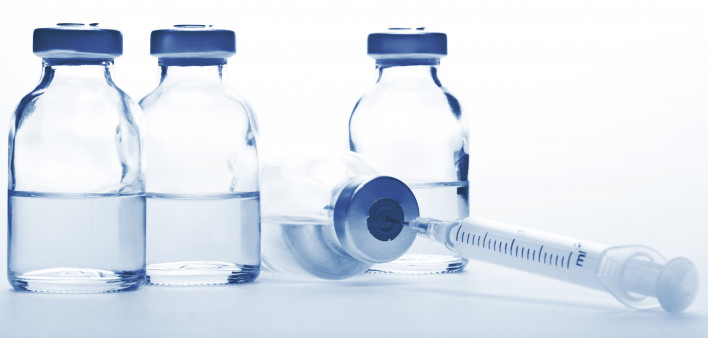The experimental long-acting injectable antiretroviral (ARV) regimen Cabenuva (cabotegravir/rilpivirine) suppresses HIV as effectively when given only every eight weeks as when given every four weeks and is safe and well tolerated. Furthermore, the recent large trial that yielded these findings also found that almost all participants favored receiving injections only every two months over doing so monthly or taking daily oral antiretrovirals.
If approved, Cabenuva would be the first long-acting injectable ARV regimen. The randomized controlled Phase III ATLAS and FLAIR studies demonstrated that Cabenuva administered every four weeks suppresses HIV as effectively as daily oral triple ARV treatment for people who entered the study with a fully suppressed viral load thanks to oral therapy.
In December, the Food and Drug Administration (FDA) declined ViiV Healthcare’s application for approval of Cabenuva given every four weeks as treatment for people who have a fully suppressed viral load and who transition onto the long-acting regimen from a stable daily oral regimen. It appears that this decline would amount only to a delay, as the FDA expressed concerns about the manufacturing process for Cabenuva. ViiV has stated that it is working with the FDA to address those concerns and bring the regimen to market.
Edgar T. Overton, MD, of the University of Alabama at Birmingham presented 48-week findings from the randomized, multicenter, open-label Phase III ATLAS-2M noninferiority study of every-eight-week dosing versus every-four-week dosing of Cabenuva at the 2020 Conference on Retroviruses and Opportunistic Infections in Boston this week.
The rationale for conducting ATLAS-2M and investigating whether eight-week dosing would work as well as four-week dosing grew out of long-term safety data from the Phase II LATTE-2 study of Cabenuva.
The participants in ATLAS-2M were largely drawn from the ATLAS study, including 391 people who were randomized in that previous study to receive Cabenuva every four weeks. Another 654 people in ATLAS-2M were on daily oral ARVs upon entering the study, whether because they had been randomized ATLAS to receive such treatment, or because they were totally knew to the long-acting treatment research enterprise.
The new mixed cohort of 1,045 people in ATLAS-2M were randomized into two even groups in which the cabotegravir component was dosed at 600 milligrams and the rilpivirine component was dosed at 900 mg given every eight weeks (522 people) or 400 mg of cabotegravir and 600 mg of rilpivirine given every four weeks (523 people).
The study is set to maintain participants in their respective treatment groups through 96 weeks, at which point they will receiving viral load testing. Then, at the 100-week mark, they will be provided the option to continue taking Cabenuva on either the eight-week or four-week dosing schedule.
The current analysis is based on monitoring conducted 48 weeks after the participants were randomized.
The demographics of the two treatment arms were similar. The median age was 42 years old, and 27% were age 50 or older. Twenty-seven percent were cisgender women, and 1% were transgender women. Seventy-three percent were white, and 18% were Black. The median CD4 count was 661.
At the 48-week mark, 94.3% of those in the eight-week group and 93.5% of those in the four-week group had a fully suppressed viral load (below 50). Because these figures were within 4% of one another, the study authors determined that eight-week dosing schedule was noninferior to, or as effective as, four-week dosing of Cabenuva. A respective 1.7% and 1.0% of each group had a viral load of 50 or greater.
There were no data on viral load available for 4.0% of those in the eight-week group and 5.5% of those in the four-week group. A respective 1.7% and 2.5% of each dosing group discontinued Cabenuva due to an adverse health event or died. A respective 2.3% and 3.1% of each group discontinued treatment for other reasons.
Seventy-seven percent of the eight-week group and 84% of the four-week group experienced any adverse health events. A respective 21% and 24% of each group experienced drug-related adverse health events. Ninety-six percent of drug-related adverse health events were mild or moderate (Grade 1 or 2). Six percent of each group experienced any adverse health events of Grade 3 or higher; 2% of each group experienced adverse health events that led them to withdraw from the study; and less than 1% and 2% experienced a drug-related adverse health event that led them to withdraw.
Five percent of the eight-week group and 4% of the four-week group experienced any serious adverse health event. Less than 1% of each group experienced a drug-related serious adverse health event, none of which were fatal.
Less than 2% of the participants stopped taking Cabenuva because of injection-related factors. The participants received 24,181 injections all told. Thirty percent of the injections in the eight-week arm and 20% of those in the four-week arm led to injection-site reactions. Less than 1% of the reactions in each group were severe. The reactions included pain, nodules or discomfort.
Ninety-eight percent of the injection-site reactions were Grade 1 to 2 in severity, with a median duration of three days in both study arms.
Of the participants in the eight-week arm who had switched from daily oral ARVs, 98% preferred the injectable regimen, 1% preferred daily oral treatment and 1% had no preference. Of the participants in the eight-week arm who had previously received Cabenuva every four weeks, 94% preferred eight-week dosing, 3% preferred four-week dosing, 2% preferred daily oral ARVs and 1% had no preference.
To read the conference abstract, click here.







Comments
Comments